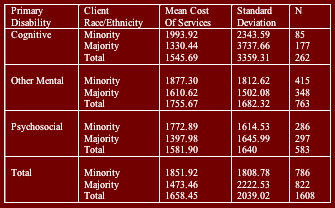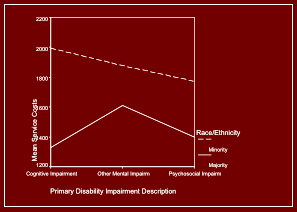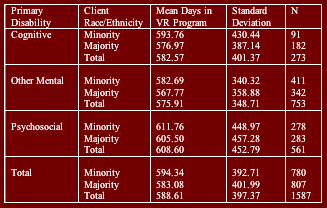





This paper was prepared to present at the 4th Annual Education Research Conference at Lamar University on March 30, 2007.
Copyright and Permission to Reprint- Lamar University College of Education holds the copyright for the Education Research Conference Proceedings. In keeping with copyright law (P.L. 94-553) authors must, whenever legally possible, assign the copyright of accepted manuscripts to LU so that both the author(s) and the association are protected from misuse of copyrighted materials. On receipt of legitimate written requests, permission is granted by LU for use of brief quotations (approximately 500 words) in published works. Permission is automatically granted to authors to use their own articles in other published work with which they are connected. Permission to reprint entire articles, for inclusion in a publication to be offered for sale, is granted only on permission and/or payment of a fee to LU. In these instances, LU requests that permission be obtained from the author(s) as well.
MINORITY AND MAJORITY CLIENTS WITH COGNITIVE, PSYCHOSOCIAL, AND OTHER MENTAL IMPAIRMENTS: INVESTIGATING DIFFERENCES IN CASE SERVICE COSTS
Abstract
The purpose of this study was to determine if there were significant differences in case service costs between minority and majority clients with cognitive, psychosocial and other mental impairments while controlling for type and severity of disability. The researcher employed the use of a nonprobability sampling procedure to select two state vocational rehabilitation offices in urban communities. The Texas Dept. Of Assistive and Rehabilitative Services supplied data on 1,765 clients who applied for or received services in SFY 2004. Data were analyzed using 2-3X2 ANOVA’s. More funds were expended on services for minority clients than majority clients. It was concluded that minorities had equal access to services and if they received inequitable treatment, it was likely not associated with the cost of services.
MINORITY AND MAJORITY CLIENTS WITH COGNITIVE, PSYCHOSOCIAL, AND OTHER MENTAL IMPAIRMENTS: INVESTIGATING DIFFERENCES IN CASE SERVICE COSTS
By Harold W. Whitfield, Ed.D., C.R.C.
Texas Southern University
Introduction
With the passage of the Rehabilitation Act of 1973 as amended, all colleges and universities that receive federal funding are required to serve students identified as being disabled by ensuring that they have equal access to educational opportunities. Many times this is achieved through the coordination of special accommodations as warranted. In Spring Semester 2007, the Lamar Institute of Technology’s Office of Students With Disabilities reported that of the 91 students registered, 82 (88%) of them had mental impairments such as ADHD, Learning Disabilities, Emotional Disturbance, etc (J. Foxx, personal communication, February 15, 2007). Texas A&M University’s (2007) Office of Students with Disabilities reported that 491students with disabilities were registered to receive special accommodations during the same time period. Of that number, 642 of them were diagnosed with some type of mental disorder because several of the students have more than one diagnosis. Many of these students are referred to state public vocational rehabilitation (VR) programs for assistance. In State Fiscal Year (SFY) 2004, the Texas Department of Assistive and Rehabilitative Services (DARS) spent 35 million dollars on academic and vocational training for clients (U.S. Dept. Of Education, 2007).
Literature Review
Individuals with disabilities are among the most disadvantaged segment of society (Rehabilitation Act of 1973 as amended). They continually face discrimination in various aspects of society such as employment, housing, and education. When one is a minority, these injustices are compounded exponentially. Ironically, some have faced discrimination from the public agencies such as those comprising the VR system, which were established to assist them.
According to the Rehabilitation Act of 1973 as amended, patterns of inequities in the state public VR programs have been documented in all major junctures of the rehabilitation process. Minorities, for instance, receive fewer services than their white counterparts. Minorities also receive consistently less costly services and they receive training less often than majority clients.
In a dissertation study, Whitfield (2006) evaluated client outcomes from the State of Texas’ vocational rehabilitation program on 4,482 clients and concluded that more funds were expended on services for majority clients than minority clients. Whitfield used archival data supplied by the State of Texas from SFY 2003 and 2004.
Wilson and Senices (2005) examined the VR acceptance rates among Hispanics and non-Hispanics in the United States using chi-square analysis. The results of the investigation indicated that Hispanics were more likely to be accepted for VR services than non-Hispanics.
Bellini (2003) examined the relationship between rehabilitation counselors’ multicultural competency and vocational rehabilitation outcomes in the context of counselor-client racial similarity and difference. This investigation used data from a large Northeastern state VR agency in the time period from January 1, 1998 through September 30, 2000. European American counselors had higher overall rehabilitation rates than did minority counselors. European American clients had significantly higher rehabilitation rates than Hispanic/Latino and African American clients. The counselor-client racial similarity among European Americans had the highest success rate of any subgroup. African American clients served by minority counselors had the lowest rehabilitation rate. European Americans served by minority counselors had high success rates. Hispanic/Latino clients had similar rehabilitation rates independent of the counselor’s race.
Patterson (2000) posited that it is beneficial to determine whether the patterns of difference exist throughout a state or only in selected areas. Patterson extended the investigation to within-state differences related to rehabilitation rates and expenditures for African Americans and European Americans in a large Southeastern state VR agency. Significant differences were noted at the statewide, district, and county levels. The rehabilitation rate was higher for European Americans than for African Americans. VR counselors expended significantly more funds on services for European American consumers than for African Americans. Statistically significant differences did not exist in all districts.
Purpose Study
Whitfield (2006) recommended a replication study controlling for the type and severity of the disability. Nationwide, state vocational rehabilitation agencies spent 769 million on training for consumers in SFY 2004 (U.S. Dept. Of Education, 2007). A large proportion of students with mental disorders are among the disabled populace receiving special accommodations in colleges and universities. Moreover, DARS spent a total of 35 million on training for clients in SFY 2004. If minorities are not receiving equitable funding for VR services, then it is argued that perhaps they are not being granted equal access to the range of services available. Therefore, the purpose of this study was to determine if minorities were granted equal access to VR services in SFY 2004. Equal access to services is operationally defined by the amount of funds expended on service provision.
Research Question
A preliminary analysis of statistical data from Texas institutions of higher learning reveal that the majority of students receiving special accommodations have mental disabilities. A review of the literature suggests that inequities continue to persist in service provision as many of those students are referred to state VR agencies. As a result, the researcher proposes the following question: Did minorities receive significantly less costly services than did majority clients in the State of Texas VR program in SFY 2004 when controlling for the type and severity of disability?
Method
At DARS, the severity of disability is determined by the number of services clients require, the time it takes for their cases to be closed successfully or rehabilitated, and the number of their functional limitations (deficits in mobility, work tolerance, work skills, self-care, etc.). Disabilities are either designated as significant or non-significant. A significant disability is one that requires multiple services (at least one service in addition to counseling and guidance and a comprehensive assessment) over an extended period of time (at least six months from eligibility to case closure).
The current study utilized a database from the State of Texas for SFY 2004 and limited the analyses to clients with cognitive (involves learning, thinking, processing information, and concentration), psychosocial (difficulty coping, interpersonal and behavioral impairments), and other mental impairments. The researcher requested data from two offices in urban communities large enough to have public transportation. The offices were selected for participation in this study because of the researcher’s knowledge of the population and the phenomenon under study. This sampling procedure is a form of nonprobability sampling called purposive sampling (Kerlinger and Lee, 2000). Tucker (1997) used a similar sampling technique when investigating the relationship between client satisfaction and rehabilitation success relative to VR counselor performance. The database did not specifically contain information about the severity of disability. However, based upon the forementioned definition, the severity of disability can be inferred to some degree by determining the amount of time clients were in the rehabilitation program.
Participants
The researcher extracted information on 1,765 clients with cognitive, psychosocial, and other mental impairments from a DARS database from SFY 2004. Out of 1,765 clients, 910 (51.6%) were majority clients and 855 (48.4%) were minorities. The minority population consisted of 835 (47.3%) African Americans, 11 (0.6%) American Indians, eight (0.5%) Asians, 5 (0.3%) Pacific Islanders, and 136 (7.7%) were Hispanics. The mean age of the clients was 35.8 years (SD = 11.13). The clients ranged in ages from 16.96 to 65.75 years.
Results
The researcher utilized a two-way factorial design (primary disability impairment description and client race/ethnicity) consisting of a 3 (psychosocial, cognitive, and other mental impairment) X 2 (minority, majority) analysis of variance (ANOVA). The results showed no significant main effect for the disability factor, F(2, 1608) = 1.0, p = 0.37, but there was a significant main effect for the client race/ethnicity factor, F(1, 1608) = 13.97, p < .001. A table of means is presented in Table 1. Minorities received significantly more costly services than did majority clients. This disparity is illustrated in Figure 1. The interaction between client disability and race was not significant, F(2, 1608) = 0.84, p = 0.43.
Table 1
Mean Cost of Services for Minority and Majority Clients With Cognitive, Psychosocial, and Other Mental Impairments

Figure 1
Mean Cost of Services for Minority and Majority Clients With Cognitive, Psychosocial, and Other Mental Impairments

To account for the severity of disability, the researcher utilized a two-way factorial design as in the above analysis, but used the length of time clients were in the rehabilitation program as the dependent variable. There was no significant main effect for the disability factor, F(2, 1587) = 1.14, p = 0.32; and no significant main effect for the client race/ethnicity factor, F(1, 1587) = 0.32, p = 0.58. There was also no interaction between client disability and race/ethnicity, F(2, 1587) = 0.02, p = 0.98. A table of means is presented in Table 2. Since the amount of time that minority and majority clients were in the VR program did not differ significantly, they are considered to have disabilities that are equal in degree of severity. A graph of this comparison is displayed in Figure 2.
Table 2
Mean Time in VR Program in Days

Figure 2
Mean Length of Time in VR Program in Days

Discussion and Recommendations
If minorities in this sample received inequitable treatment as it relates to service provision, it is likely unrelated to cost of services since they received more costly services than majority clients. This implies that minorities in the sample population received equal (and perhaps more) access to the range of services from the State of Texas Dept. Of Assistive and Rehabilitative Services as did (or more than) majority clients in SFY 2004. Therefore, it is recommended that other state VR agencies model their programs after the State of Texas. Minorities are 1.5 times as likely to have work-related disabilities than the general population and are twice as likely to be significantly disabled (Rehabilitation Act of 1973, as amended). Future studies might use additional criteria to refine the severity of disability definition to include recipients of Social Security Disability Insurance (SSDI) and Supplemental Security Income (SSI).
References
Bellini, J. (2003). Counselors’ multicultural competencies and vocational rehabilitation outcomes in the context of counselor-client racial similarity and difference. Rehabilitation Counseling Bulletin, 46(3),
164-173.
Kerlinger, F. N. & Lee, H. B. (2000). Sampling and randomness. In C. Wada, L. Hensley, & J. Pierce-Bratcher (Eds.), Foundations of behavioral research (pp. 163-183). California State University, Northridge: Wadsworth Thomson Learning.
Patterson, J. B. (2000, April). Equitable treatment in the rehabilitation process: Implications for future investigations related to ethnicity. Journal of Rehabilitation. Retrieved March 19, 2005 from www.findarticles.com
Rehabilitation Act of 1973 as amended (1998), US Department of Education Retrieved February 20, 2006 from http://www.ed.gov/policy/speced/reg/narrative.html?exp=0
Texas A&M University (2007). Disability Services. Statistics for disability services: Complete DS statististics for the spring- 2007 semester. Retrieved February 15, 2007 from http://disability.tamu.edu/stats.asp
Tucker, C. M. (1997, April-June). The relationship between client satisfaction and rehabilitation success as measures of VR counselor performance. Journal of Rehabilitation. Retrieved January 31, 2005 from www.findarticles.com
U.S. Dept. Of Education (2007). RSA program data and statistics. Retrieved February 15, 2007 from http://www.ed.gov/rschstat/eval/rehab/statistics.html
Whitfield, H.W. (2006). An evaluation of client outcomes from a state vocational rehabilitation agency: Two urban communities. Unpublished doctoral dissertation, Texas Southern University, Houston, Tx.
Wilson, K. B., & Senices, J. (2005). Exploring the vocational rehabilitation acceptance rates for Hispanics versus non-hispanics in the United States. Journal of Counseling & Development, 83, 86-96.
****Please note that if you are interested in purchasing my services, I can accept payment by Paypal via email. I will not have any access to your personal financial information. You may contact me by cell phone
(409-338-9081).****
